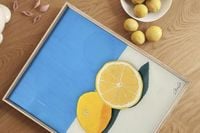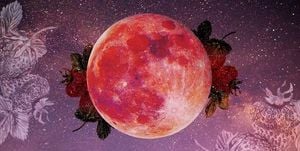In the ever-evolving world of home decor, 2025 is shaping up to be a year of vibrant contrasts and versatile practicality. From the resurgence of yellow paint hues to the dual trends of "city glow" and "cottage flow," and the modest yet mighty rise of stools in interior design, homeowners and designers alike are embracing creativity, comfort, and adaptability.
One of the most talked-about trends is the renewed love for yellow in home paint colors. Jordan Slocum, co-founder of the Brownstone Boys design and renovation firm in Brooklyn, New York, predicts that yellow will continue to brighten homes over the next year and a half to two years. However, this isn’t the bright, buttery yellow of decades past. Instead, today’s yellows lean toward richer, earthier tones. Paula Wallace, founder of the Savannah College of Art and Design, prefers a marigold hue that strikes a balance: “not too whimsical or flimsy.”
Designers emphasize the importance of sampling before committing to a full room. Slocum advises, “I don’t really believe in accent walls … but maybe just try one wall, see how you’re liking it, and then from there you can always continue it through other walls or do a full drench.” This approach allows homeowners to experiment with shades like Sherwin-Williams’s Nugget, a bright, sunny color used by designer Laura Hildebrandt to energize a windowless basement gym in Vienna, Virginia. Hildebrandt said, “I always try to make sure [a paint color] is something that is natural and can really be easily found in nature because our brains understand nature.”
Jordan Slocum and his husband Barry Bordelon found their perfect yellow during a trip to the United Kingdom. They fell for Farrow & Ball’s Duster, an “aged yellow,” which they initially tried on one wall before embracing a full room drench. Slocum described it as a shade that “really felt like our sacred space — a place that we can turn everything off and just relax.”
Other designers are using yellow to make bold statements. Kishani Perera of Los Angeles calls yellow “instant joy” and recently painted a client’s front door in Benjamin Moore’s Sunflower, a “deep, rich yellow” that “brought so much life to the house.” Meanwhile, Diana Byrne in Rye, New York, chose Benjamin Moore’s Citron for a lacquer finish in a dining room and bar, appreciating its “unapologetic and edgy” vibe that contrasts beautifully with oak millwork. For a more playful take, designer Bridget Tiek’s daughter picked Farrow & Ball’s Babouche, a “loud and proud” deeper yellow that shifts with the light, adding dynamic energy to her Baton Rouge bedroom.
Even spaces with no natural light are getting a sunny makeover. Emily Vaughan, a Bethesda, Maryland designer, used Farrow & Ball’s Bombazine, described as “sunny, cheerful,” in a basement laundry room paired with Morris & Co. wallpaper to brighten the otherwise dull space. Betsy Lanphier, founder of Elizabeth Swift Interior Decoration in Philadelphia, brought a zingy pop to her formal dining room ceiling with Farrow & Ball’s Citrona, a yellow-green shade edging into chartreuse. Lanphier noted, “It rides that line of yellow and green, but it’s very cheery and has a level of sophistication to it.”
While color trends are making waves, furniture is also experiencing a subtle revolution. Stools, often overlooked, are dominating design trends for their blend of fashion and function without taking up much space. Laura Koshel, interior designer and owner of LK Design, highlights stools’ versatility. “Footstools offer a fun opportunity to introduce an unexpected design element into a space,” she told House Digest. “Whether through color, texture, or shape, they can add a playful or eclectic touch without overwhelming the room.”
Beyond aesthetics, stools serve practical purposes. They provide extra seating, display spaces, or even storage, especially hollow footstools that can hold blankets. Koshel points out that footstools are typically lower than ottomans, making them more ergonomic for resting feet. “Their height plays a crucial role in ergonomics,” she said. “Unlike ottomans, which can be quite high (some reaching up to 20 inches), footstools are typically lower, allowing for a more natural and comfortable leg position.”
Their lightweight and portability make footstools especially suited for smaller apartments or rooms where space is at a premium. “They can be repositioned effortlessly, making them versatile additions to both formal and casual settings,” Koshel explained. Whether serving as a footrest while reading, extra seating during movie nights, or even a coffee table when larger, stools bring both charm and utility to any home.
Complementing these practical pieces are two contrasting but equally compelling decor aesthetics gaining popularity worldwide: “city glow” and “cottage flow.” These trends were spotlighted at the Maison et Objet fair in France and Ambiente in Germany, where designers showcased a spectrum of styles that capture the spirit of today’s diverse lifestyles.
“City glow” embodies an exuberant urban vibe that resonates strongly with younger generations shaped by digital culture. Interior designer Gretchen Rivera of Washington, D.C., describes it as featuring “surrealist art, energetic colors, and playful, almost toy-like design.” Anton Liakhov, a designer in Nice, France, adds that it’s “loud and in-your-face” for those seeking creativity and self-expression. This aesthetic favors highlighter-hued throw pillows, street art, and hefty Brutalist furniture made of steel or concrete, alongside graffiti-style rugs and wallcoverings. Paint colors like Benjamin Moore’s Bryce Canyon and Springtime Bloom and neon wall paints from Daydream Apothecary amplify the boldness.
South Florida’s Oliver Gal brand, led by sisters Ana and Lola Sánchez, exemplifies this trend with their handcrafted statement pieces — from giant acrylic gummy bears to graphic surfboards and pop culture-inspired wall art. Their new Rococo Pop collection fuses 18th-century rococo opulence with pop-art mischief, creating “little rebels in ballgowns,” as Ana Sánchez puts it, celebrating “contrast” and “modern mischief.”
In stark contrast, “cottage flow” offers a peaceful sanctuary inspired by nature and slower living. Liakhov describes it as a space where “you can play around with textures that are anchored in, and in tune with, nature.” Think mossy woolen throws, softly burnished wood, vintage quilts, gingham, garden florals, and prints of birds and woodland creatures. Etsy’s 2025 spring/summer trend report showed a staggering 26,000% increase in searches for “French cottage decor” compared to the previous year.
New York-based designer Kathy Kuo observes this shift as a reaction to two decades of “hustle culture.” Trends like cottagecore and coastal grandmother reflect a desire to embrace simplicity and nature, even for urban dwellers. Paint colors echo this mood, with HGTV Home by Sherwin-Williams naming Quietude, a calming sage green, its color of the year. Little-Greene’s collection includes soothing shades like Rolling Fog and Tea with Florence.
Interestingly, many designers see potential in blending these two aesthetics. Kuo notes, “Many city dwellers love time in nature and have an affinity for a more rustic look, while still feeling called to honor their urban environment in their home.” Sleek urban motifs infused with organic textures and biophilic elements create personalized spaces that are anything but cookie-cutter.
Whether it’s mixing botanical patterns with industrial lamps, pairing polished concrete floors with vintage-inspired wallpaper, or using sliding partitions to create style transitions between rooms, the key is personal expression. After all, “the best designs are the ones that are personal, rather than perfect,” Kuo says.
From the cheerful yellows brightening walls and ceilings to the understated yet versatile stools enhancing both function and form, and the dynamic interplay between “city glow” and “cottage flow,” 2025’s home design landscape invites everyone to find their unique style and make their space truly their own.




